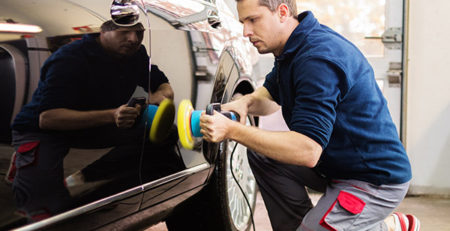How to Clean Your Car’s Engine Bay
My First Engine Cleaning Nightmare
I remember vividly the first time I tried to clean my car’s engine bay. At the time, I thought it was as simple as hosing down the engine bay, just like washing the exterior of my car. Boy, was I wrong! I was greeted with a cloud of smoke the next time I started the car. Safe to say, that was my first and last attempt at DIY car maintenance for a while. But every cloud has a silver lining, and that embarrassing mistake sparked in me a desire to learn how to do it right. So, let’s avoid any smoke clouds, and dive right into how to clean your car’s engine bay safely and effectively.
Understanding Your Engine Bay
The engine bay is the heart of your vehicle. It houses the engine, battery, radiator, and more. It’s not just about aesthetics – a clean engine bay can improve performance and help you spot potential issues like leaks or corrosion. Cleaning your car’s engine bay is a crucial part of car detailing that often gets overlooked.
Preparations for Cleaning
Before we get to the engine bay cleaning steps, we need to prepare. Gather your tools: a degreaser, brushes of different sizes, microfiber towels, and a garden hose with an adjustable nozzle. Make sure your engine is cool to touch, to avoid the risk of burns or causing damage to certain components. It’s also a good idea to disconnect the battery, to prevent any electrical issues. Safety goggles and gloves are a must – we’re not aiming for a repeat of my smoke cloud incident, remember?
Step-by-Step Cleaning Process
Now, onto the main event – how to clean your car’s engine bay. Here we go:
- Step 1: Start by dry brushing. This removes loose dirt and dust and makes the degreasing process more effective.
- Step 2: Apply the degreaser. Make sure to reach every corner and crevice. Avoid spraying directly onto electrical components.
- Step 3: Agitate the degreaser with your brushes. Use the smaller brushes for tight spots.
- Step 4: Rinse off the degreaser. Use the garden hose on a low-pressure setting. Again, avoid spraying directly onto electrical components.
- Step 5: Dry the engine bay thoroughly with your microfiber towels. You can also use a blower for this.
- Step 6: Apply a protectant. This will help keep the engine bay cleaner for longer and give it a nice shine.
That’s it! You’ve just performed your own car engine cleaning. It’s not as daunting as it seems, is it?
Take Your Car Maintenance Game to the Next Level
Cleaning your car’s engine bay is a great start, but there’s so much more to DIY car maintenance. Consider investing in paint protection measures like ceramic coating or paint protection film (PPF) to keep your car looking its best for a long time.
If my disastrous first attempt at cleaning my engine bay taught me anything, it’s that knowledge is power. I hope this guide empowers you to take the leap into DIY car maintenance. And remember, always take safety precautions, unless you want a smoke cloud story of your own!
### Tips for Effective Engine Bay Cleaning
Cleaning your car’s engine bay may seem like a daunting task, but with the right approach, it can be easy and rewarding. Here are some tips to help you do it effectively.
* **Do disconnect your battery**: Before you start cleaning, it is crucial to disconnect your battery to avoid causing any electrical faults.
* **Don’t use a high-pressure washer**: While it might be tempting to blast away grime with a high-pressure washer, doing so could damage sensitive components. Instead, use a low-pressure sprayer or even a garden hose.
* **Do use the right cleaning products**: Not all cleaning products are suitable for engine bays. Avoid using corrosive or heavy-duty cleaners. Instead, opt for a degreaser specifically made for engines.
* **Don’t forget to cover sensitive areas**: Elements like the alternator, air intake, and any exposed electronics should be covered before you start cleaning to prevent any potential damage.
* **Do let your engine cool down before cleaning**: Cleaning a hot engine increases the risk of burns, and rapid temperature changes can cause damage.
A common mistake to avoid is rushing the drying process. After cleaning, it’s essential to let your engine bay air dry completely before driving. Using a blower can speed up the process, but avoid using heat to dry your engine.
### Benefits of a Well-Maintained Engine Bay
Maintaining a clean engine bay offers several advantages beyond aesthetics. Here are a few:
* **Improved Car Performance**: Dirt and grime can cause components to wear out faster, reducing your car’s performance. A clean engine bay can help ensure your car runs smoothly.
* **Prolonged Engine Life**: Regular cleaning can help prolong the life of your engine. By removing dirt and debris, you reduce the risk of corrosion and overheating, leading to a longer-lasting engine.
### With Regular Cleaning, Enjoy Long-Lasting Benefits
In conclusion, regular engine bay cleaning is a simple yet effective way to improve your car’s performance and prolong its life. Whether you do it yourself or hire a professional, keeping your engine bay clean is an investment that pays off in the long run. So roll up your sleeves and start cleaning—it’s worth it!










